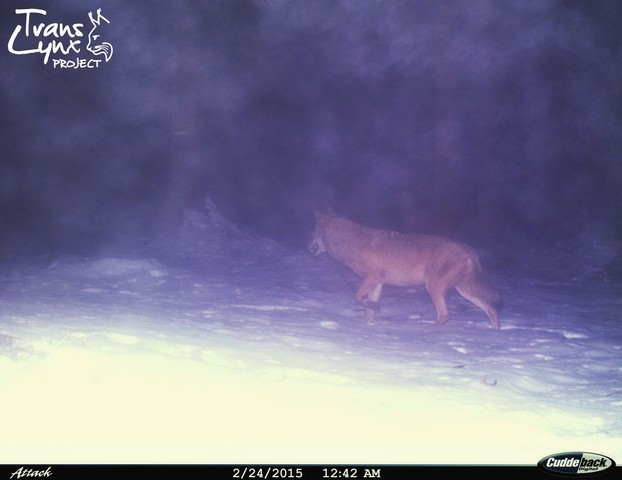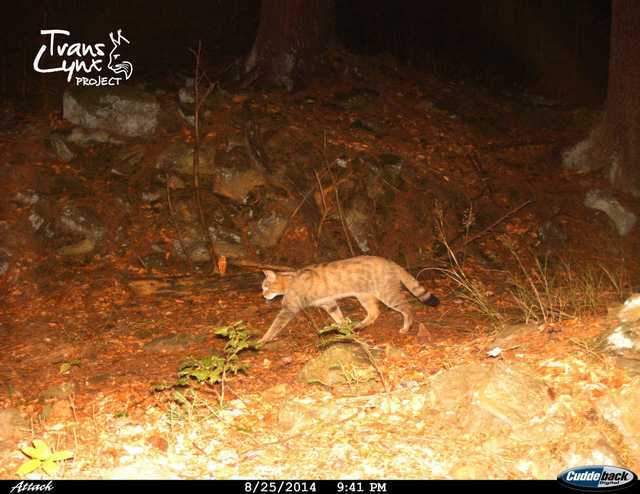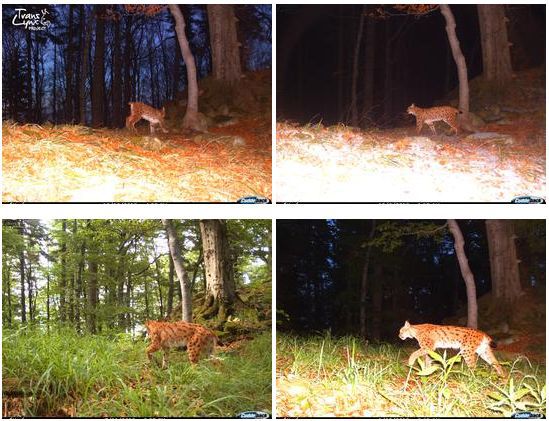
13th September 2017 Our last photos and videos from Novohradske hory show us, that the three kittens of Jiskra born in spring 2016 successfully made it till independence! They are not juveniles any more, following their mum everywhere she goes, but subadults moving on their own and maybe already dispersing to new areas. What is so special about that? Well, lynx mothers usually lose one or more of their kittens during their first, most vulnerable, year of life. An average litter size of lynx, according to our data from this area, is 2-2.4. But 40% of kittens die before they reach one year of age. Therefore, Jiskra is very good, unusually successful mother! Taking into account she is a young female, born in 2014, and this was her first attempt at motherhood, she did a wonderful job. Check it yourself – see how the time went with Blesk, Boure and Svit in Novohradske hory area in pics and a very nice video of almost adult kittens.
1st July 2017 We launched the 3Lynx project! Together with 11 partners from 5 European countries, together with foresters and hunters, we want to watch and protect endangered lynx, especially its Czech-Bavarian-Austrian, Alpine and Dinar populations. We hope that the cooperation of many experienced professionals will bring new ideas and insights into how to tackle the problem of poaching and more effectively protect our small population. What does it mean to you? You can look forward to new "lynx stories", this time from the wider BBA region and a lot of new photos on our map!

25 March 2015 - Our project Trans-Lynx brought us the real sensation! The first evidence of a wolf presence in Šumava (Bohmerwald) mountains. It was photo-trapped on the right bank of Lipno dam, where we previously had lynx as well as moose. Both pictures were confirmed by the experts from Bavaria, Saxony and Italy as a wild wolf. Although we do not have a DNA evidence, it can be assessed from the body shape, that it is a wild wolf, probably a male. We think it is a single migrant.
In February a single migrating wolf was photographed in Austrian Wienviertel near Stornsdorf, in March another was spotted in Bavaria near Rottal. Where do these migrants come from? The population in the Saxony-Polish-Czech border area is growing and the animals are spreading to the Central and Western Europe.
The wolf returns to where it always belonged.

13 February 2015 - We have got a Wild Cat! One of the rarest, most elusive mammals of the CR has not been proved here for long 50 years. Until the photo-traps started being used massively for lynx photo monitoring. In 2011 Wild Cat has been photo-trapped three times in Sumava Mts., in 2013 once in Beskydy Mts. However, we have got a picture from another region - Cesky les/Oberpfaltzer wald area.

A multi-lingual version of the Trans-Lynx map application was launched (at the website http://map.translynx.eu) on the 15th of January 2014. The Map App shows preliminary results of the photo trappingof the Bohemian-Bavarian-Austrian lynx population. Besides lynx a number of other forest animal was photographed by these photo-traps. So far the Map App Shows 835 photos of 16 forest mammal species.
The lynx photo-trapping, realised within the Trans-Lynx Project, is done above all at the edge of the area of the BBA lynx population and on the routes of migration corridors, thus avoiding the core area of the lynx distribution in NP and PLA Šumava. Therefore, it brings a very new data on the lynx distribution area in the BBA region. More about Trans-Lynx Project can be found at http://www.luchsprojekt.de/.

Within the Map App the photos of lynx and other forest animals can be viewed either by selecting a specific monitored area in the map or by selecting a specific species in the left menu.
In the next step, also lynx pictures from Bavaria and Austria will be presented in the Map App.